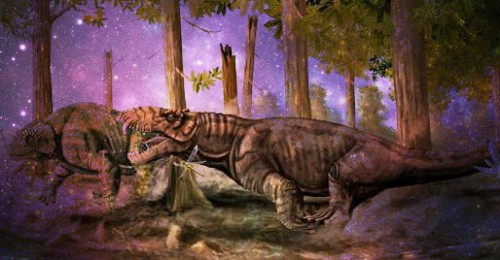
Image Courtesy of Discovery Channel
Until now, dinosaurs, belonging to the family of reptiles, were believed to be cold blooded. However, more and more researchers proved that their biological behavior befitted warm-blooded animals, i.e., mammals. However, this was, until now, just an alternate theory.
However, biologist John Grady from the University of New Mexico, along with his colleagues, has developed a new means of analyzing metabolic rates of the dinosaurs.
Building on previous work by palaeontologists and physiologists, they created a large database on growth and energy in both living and extinct groups of vertebrates including 21 species of dinosaurs.
They then used statistical analyses and energetic models to determine the relationship between growth rate and energy use.
Annual growth rings in fossils were used to determine growth rates, while metabolic rates were estimated by using changes in body size as an animal grows from birth to adult (known as ontogenetic growth).
“We found that growth rate is a good indicator of energy use in living animals. Warm-blooded (endothermic) mammals grow 10 times faster than cold-blooded (ectothermic) reptiles, and metabolise 10 times faster; in general doubling one’s metabolic rate leads to a doubling in growth rate,” Grady explains.
However, when they examined the growth rates of dinosaurs, although there was some variation in the rate they grew, they had neither the high metabolic rate of mammals and birds, nor the low metabolic rate of reptiles.
“Surprisingly we found that, instead, they occupied the middle energetic ground.”
Thus, dinosaurs seem to occupy a middle ground amongst cold-blooded and warm-blooded creatures. Leatherback turtles, tuna, great white sharks and the echidna are some modern-day creatures who have the same kind of blood flowing through their veins.
What are your thoughts?
13 comments



